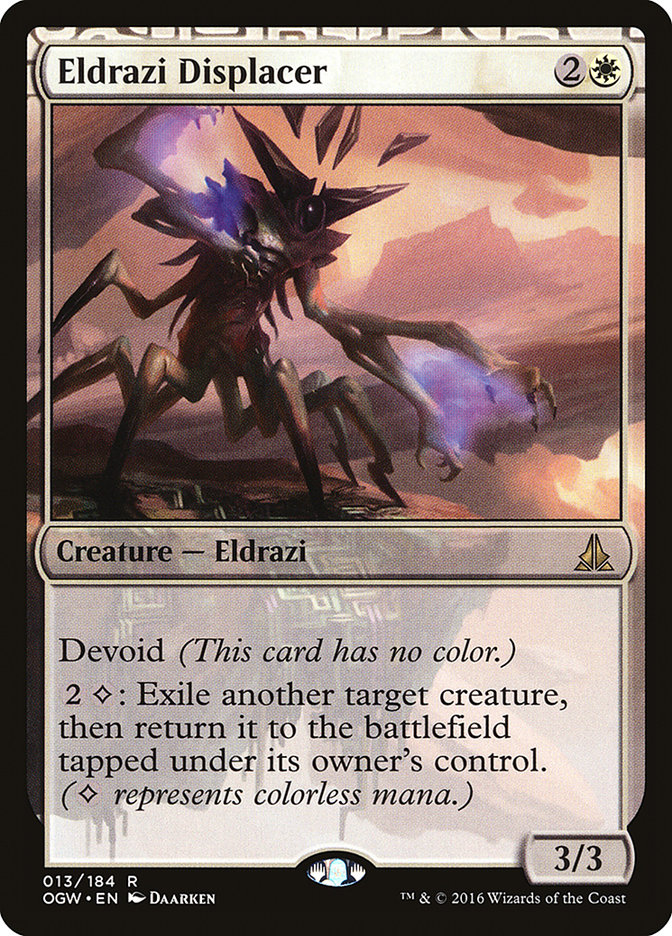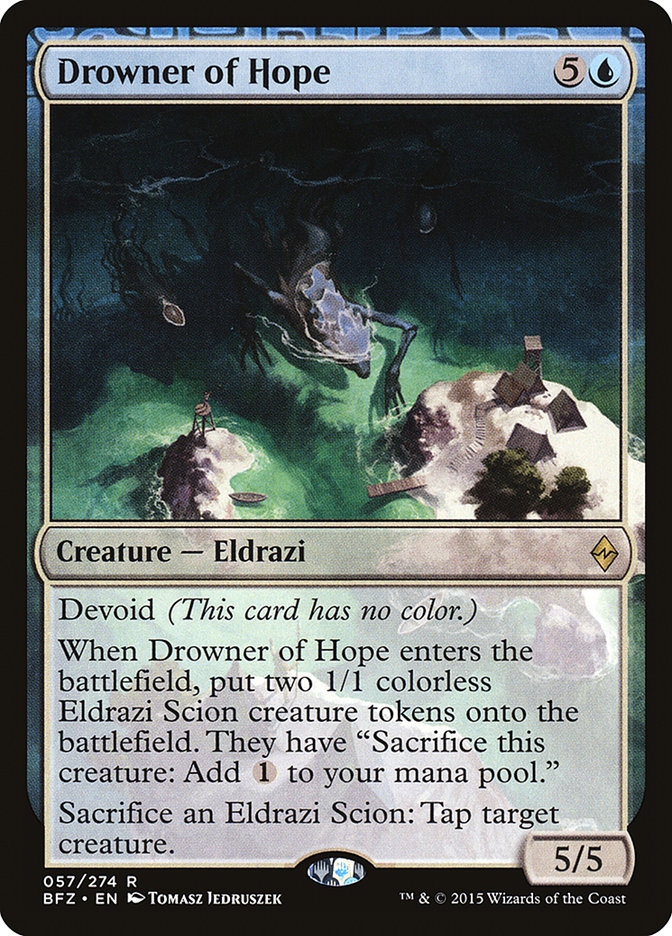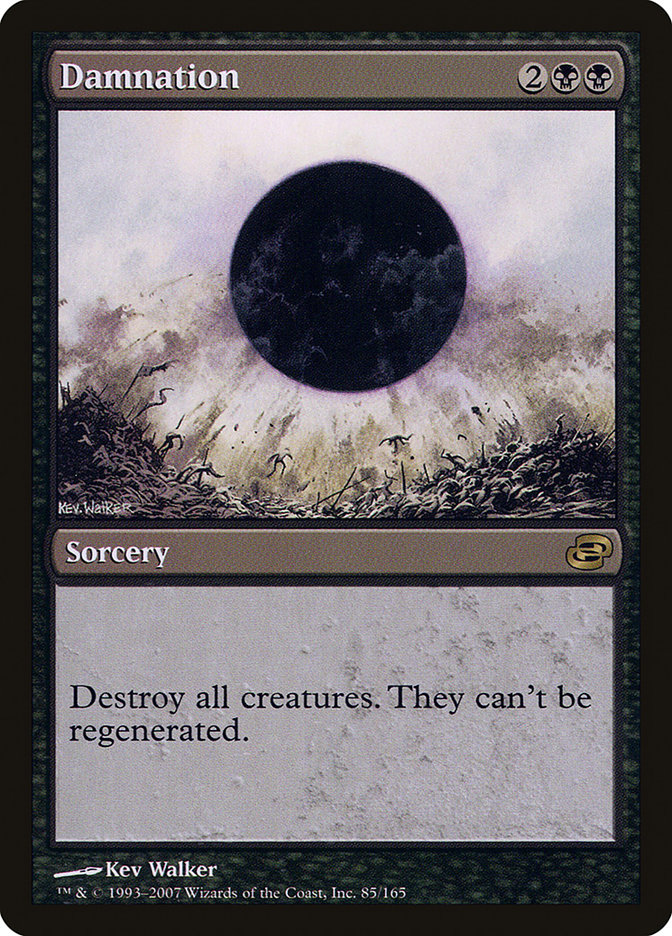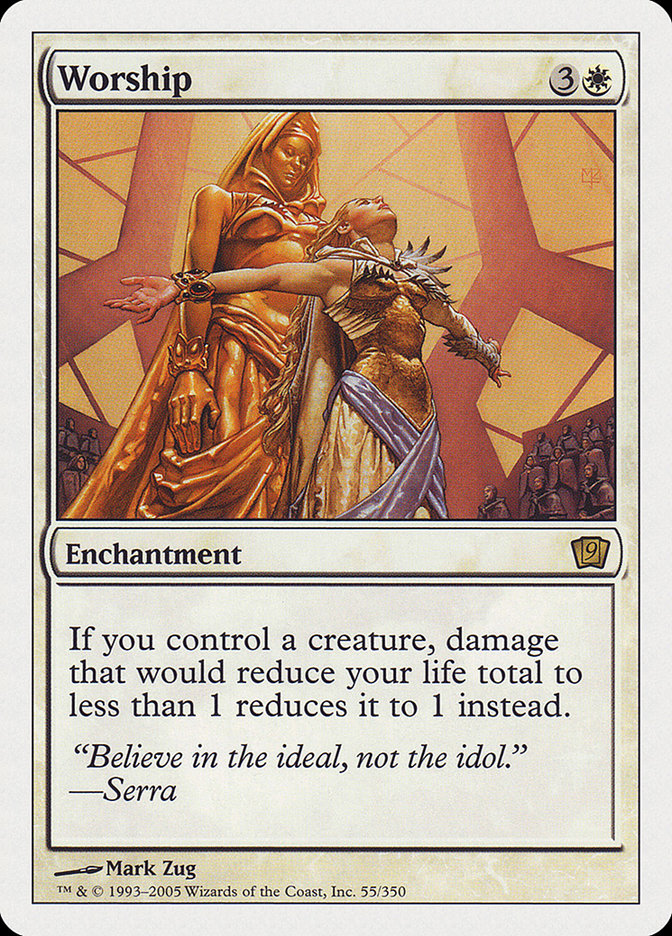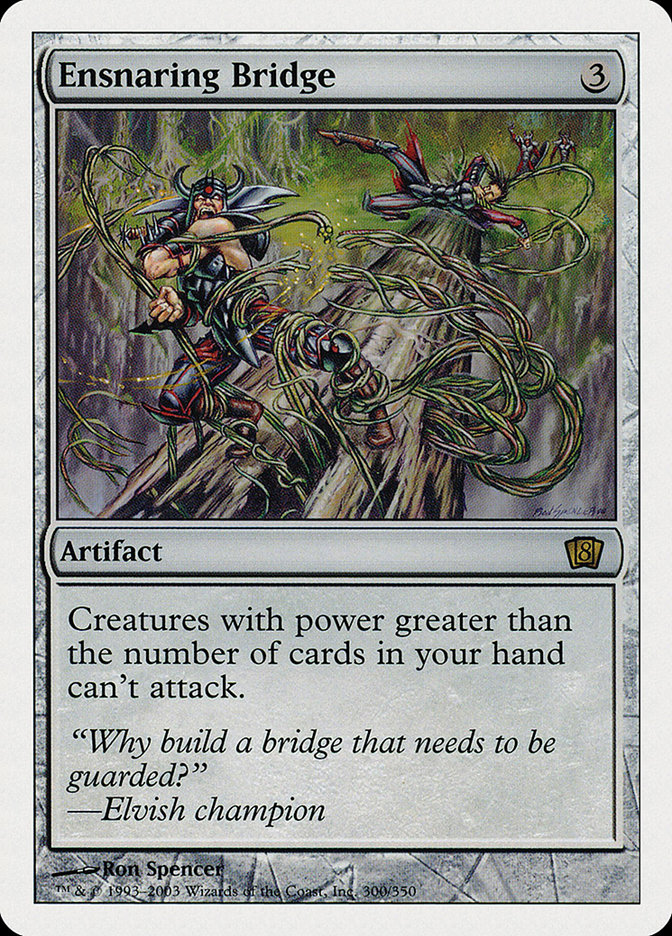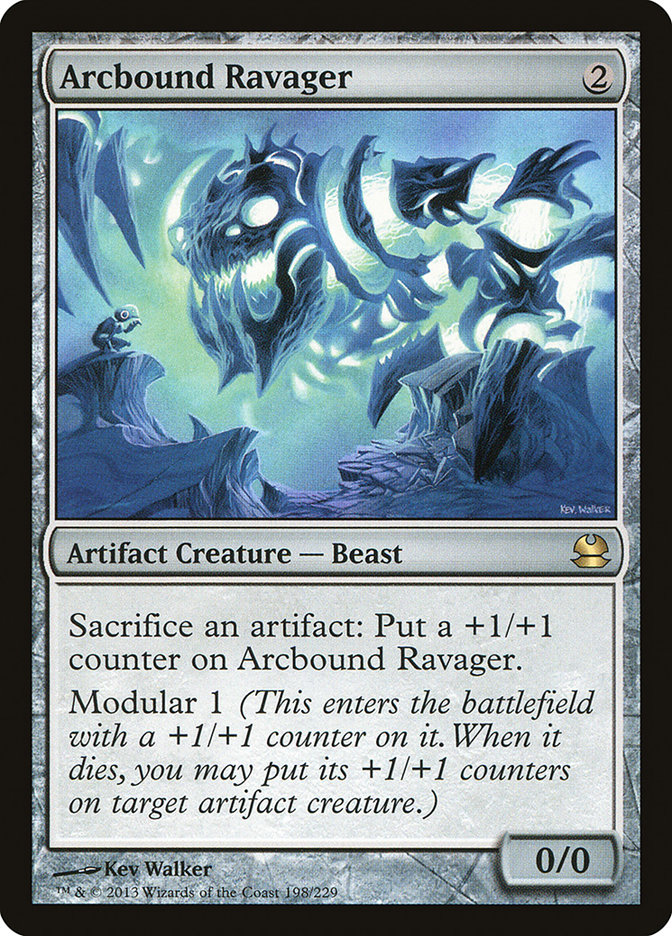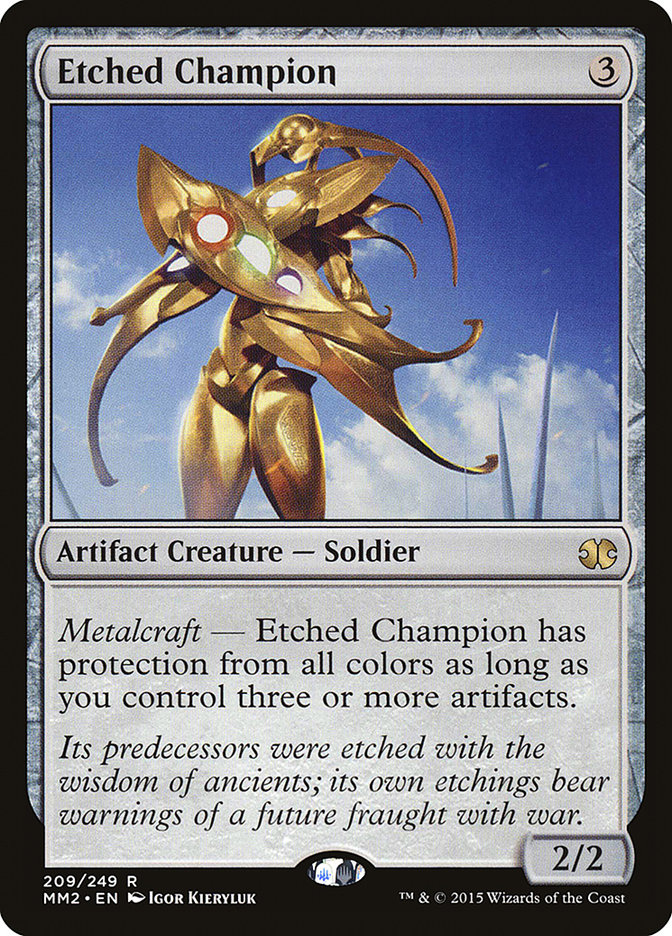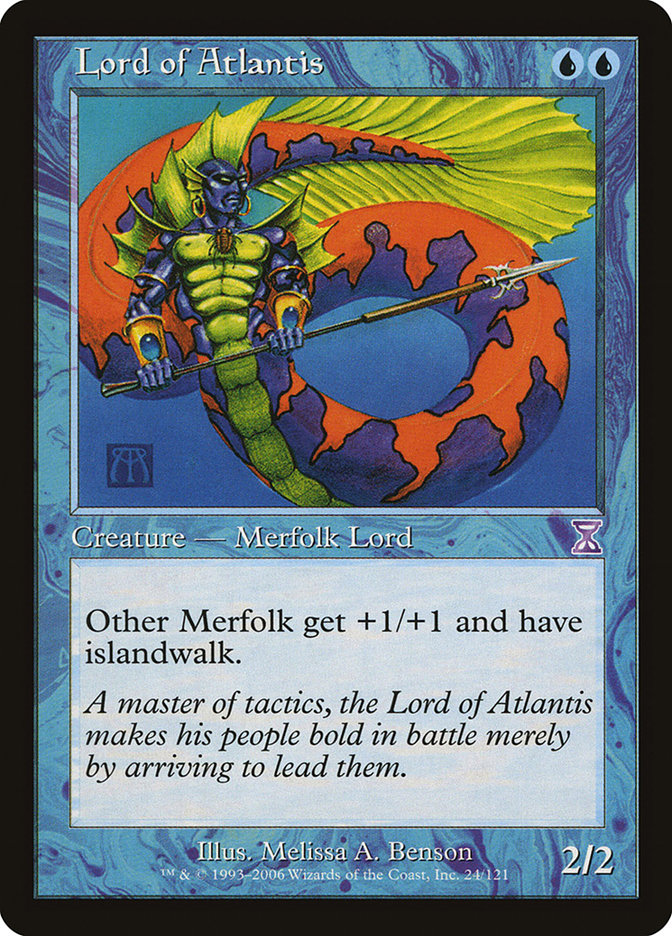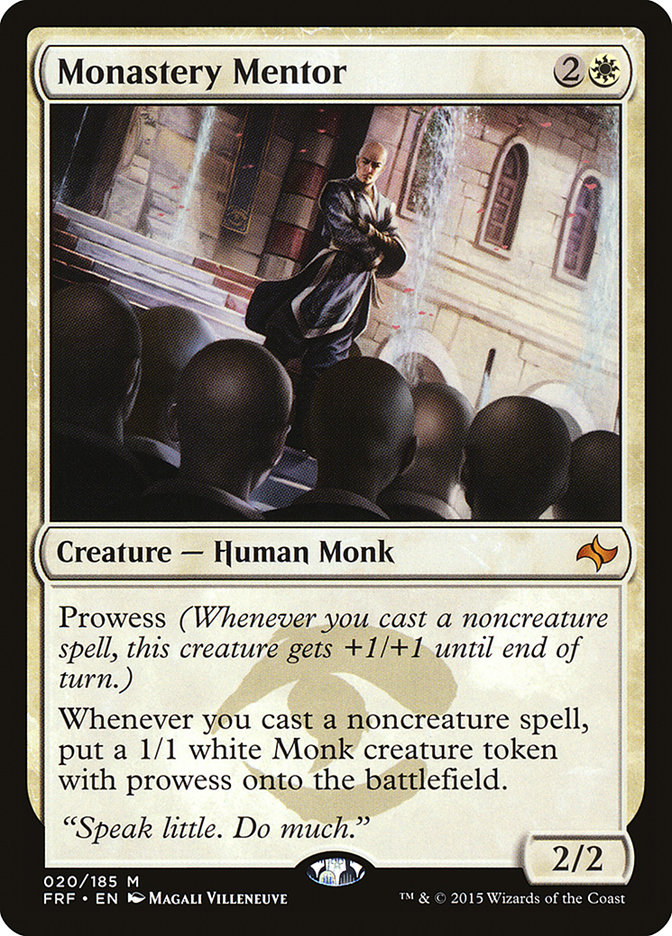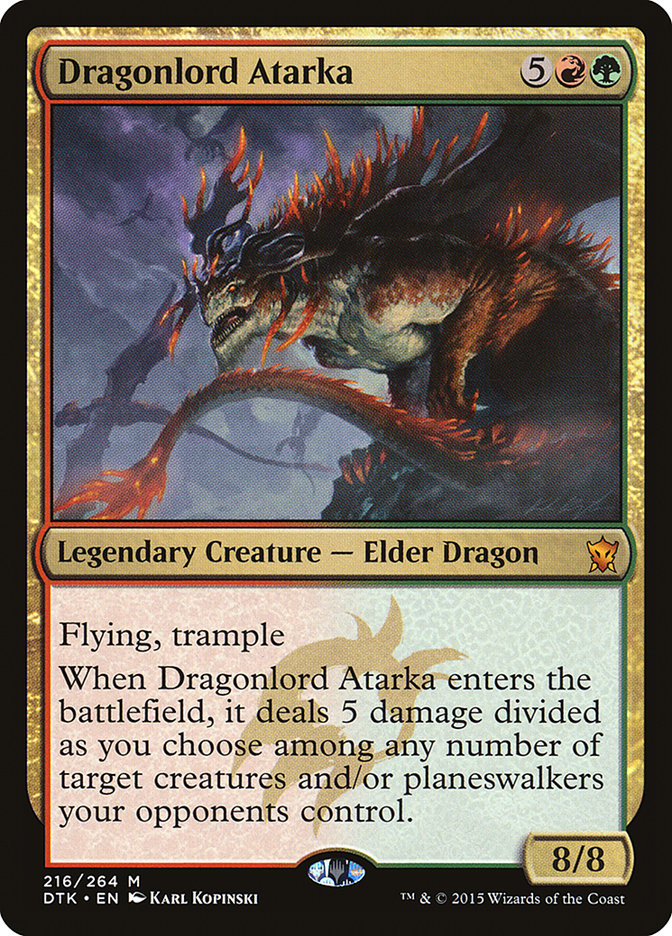 wrote about last week.
wrote about last week.
I beat all three Eldrazi opponents I played against (despite making a laughable mistake on-camera), but ultimately fell to the likes of G/R Tron, Jund, and Goryo’s Vengeance.
What my tournament came down to is a classic error. I sacrificed playing a traditionally powerful deck for the sake of my perceived positioning in the tournament.
Merfolk is not as fast as Affinity, Infect, or Zoo. It is not as disruptive as other blue decks, and it is clearly not as broken as Eldrazi. It is an aggressive synergy deck that is a sum of its parts, a house of cards that is more than capable of crumbling when faced with significant resistance.
In this case, Oblivion Stone, Lightning Bolt, Damnation, and turn 2 kills all count as significant resistance.
I didn’t pick Merfolk by mistake. I thought the combination of a reasonably fast clock backed by significant means of interacting with the battlefield would prove to be an effective means for combatting Eldrazi. To that effect, I don’t believe I was wrong.
Eldrazi had yet another dominating performance at #SCGLOU. Nearly 50% of the Day 2 metagame was Eldrazi and it represented over 62% of the Top 32 of the event.
Let’s put aside for a brief moment whatever our feelings might be regarding the Eldrazi and instead focus on the prime objective of anyone not piloting the deck themselves: beating it.
To even breach that hyper-saturated metagame, one has to obviously make the second day of competition. Once there, playing against Eldrazi is still only (or perhaps slightly better than as the rounds progress) a coin flip.
The Perils of Metagame Decks
It’s worth noting for the sake of discussion that this is by no means a “normal” metagame. Clearly, upwards of 50% of the winner’s metagame is an absolutely absurd number, but again, I’m not going to harp on the inevitable ban.
The point is that, even with these numbers, designing a deck to beat specifically Eldrazi is in itself problematic in the Modern format.
There is no one card or effect that spells lights-out. The Eldrazi decks are not “all-in” or abusive of a singular zone or type of interaction. In reality, they are really more akin to Limited decks when the games actually begin, mostly just attacking, blocking, and throwing a few removal spells at things that get in the way. Cards like Worship, Ensnaring Bridge, and Ghostly Prison are effective means for making the combat step difficult for the Eldrazi deck.
That being said, the U/W Eldrazi deck has built-in means to fight all three of these cards. Thought-Knot Seer + Eldrazi Displacer can deck an opponent. Eldrazi Displacer + Spellskite + Eldrazi Mimic can enable an attack with a zero-power creature that suddenly becomes quite large once it has passed under the bridge. Eldrazi Displacer + Eldrazi Skyspawner or Drowner of Hope can create a huge horde of Scions that are willing to sacrifice their life to pay to get out of jail.
There are G/R Eldrazi decks playing World Breaker to fight these types of “hate” cards, and some Eldrazi decks are even go so far as to splash the Standard Ramp standout in their sideboard.
Gimmicks just don’t work. Metagame decks that don’t have a cohesive strategy themselves have always failed throughout the history of Magic, and things are no different now, despite what the numbers are. If you can’t beat decks that aren’t Eldrazi (and, honestly, you may not even be always beating them), then your deck just isn’t viable.
Lantern Control is actually a reasonable route to take against Eldrazi because it has its own (demented) gameplan for controlling and eventually winning the game while also being able to actively leverage a powerful card against the undercosted baddies in Ensnaring Bridge.
Creature combo decks like Abzan Company and Kiki-Chord are being played because their end-games are able to ignore what Eldrazi does. They just try to assemble their kill or lock while buying as much time as possible.
Now, don’t misconstrue what I’m saying. Merfolk is a cohesive deck; it is technically interested in executing a linear game plan and can do so in a consistent manner. However, I think my decision to go as deep as playing Reflector Mage was probably a bit too extreme. While the Standard all-star is a reasonable means to give me some additional disruptive elements against Eldrazi, it proved to be too weak against the majority of Modern decks and not a reasonable pivot to take in terms of raw power in the context of the format as a whole.
The real issue however, is the matter of having to contend with…
Splash Damage
I ran into Andy Ferguson and had a brief conversation with him on the tail-end of Sunday. It turns out that he also played U/W Merfolk in the Modern event and similarly had his tournament cut short (his finish in the Standard Classic was significantly better than mine, though). Our story was basically the same: we both put up great records against Eldrazi but were absolutely destroyed by the other decks.
Eldrazi is a creature deck at its core. Removal is fairly effective against it, and as a result, it is critical that the average “fair” deck be capable of killing large creatures in a timely manner to interact with it.
Merfolk is a creature deck.
I should have done the math.
It makes perfect sense for my Jund opponent to cast Damnation against me in game 1. It’s actually capable of catching back up against absurdly explosive Eye of Ugin starts and can remove all of Eldrazi’s variously sized and costed creatures without bias.
Worship, Ensnaring Bridge, and Ghostly Prison, despite not being “hard locks” against Eldrazi, are actually all quite close to that against Merfolk.
Even though I never lost a match to one of the above three cards, it doesn’t make a whole lot of sense to enter a tournament where, if everyone else is preparing for the best deck just like you are, they are also inadvertently improving their matchup against you.
If you look at this in a bit more extreme manner, I’m essentially choosing to play the fairest unbannable Eldrazi deck of all time that has a slight edge in the mirror.
This is not the way to win a tournament.
While I was able to successfully position myself to beat Eldrazi, the massive sacrifices in power are too problematic for a format as punishing and hyper-efficient as Modern.
Why Does Affinity Succeed?
Affinity is the second-best-performing deck behind Eldrazi at the last two major Modern tournaments, and it won #SCGLOU. Affinity is still excellent because it retains its ability to kill as quickly as almost any deck in the format, including getting under Eldrazi, while also not succumbing to any splash damage.
U/W Eldrazi may begin to mark a significant uptick in the number of Stony Silences in the next few weeks, but for now, Affinity isn’t facing any real incidental hate from the Eldrazi fallout while also having ways to get around common obstacles like Ensnaring Bridge. Austin Holcomb even went so far as to play the Bridge himself in conjunction with Ghirapur Aether Grid!
Creatures (25)
- 4 Arcbound Ravager
- 4 Ornithopter
- 1 Master of Etherium
- 2 Steel Overseer
- 3 Memnite
- 2 Etched Champion
- 4 Signal Pest
- 1 Spellskite
- 4 Vault Skirge
Lands (17)
Spells (18)

For what it’s worth, just to rub it in, the Affinity matchup is also historically horrendous for Merfolk.
Moving Forward and Applications for the Future
The current incarnation of Modern is one of the most extreme examples of the “best deck” in terms of its raw numbers and win percentages. While successfully adapting in the short term is certainly valuable, it is imperative to not look at Magic in terms of snapshots, but rather by what can be learned as a whole.
Tournaments can be just as easily won and lost by what we write down on a decklist as by the physical playing of the cards. Good decision-making stems from thinking about what we want to accomplish inside and outside the game, but also by giving honest thought to how others might approach the problems at hand.
It makes sense that the ways folks would adjust for an Eldrazi-infested metagame would, by design, be problematic for my fundamentally underpowered blue creature deck. What I had originally perceived to be a linear exchange of power for positioning was in reality just a pure sacrifice.
If I had thought more critically about the format at hand, it would have been clear that I was not giving myself a large chance of winning the tournament.
Further to this end, even once the tournament had begun, if I had taken a more thoughtful approach to how people and their decks would react, it may have been possible for me to take a different line of play against my Jund opponent who destroyed me with Damnation. Just having that card on my radar as a possibility could have won me an additional match.
While I walk away from #SCGLOU without a high finish or prize money, I do now have a broader understanding of the conception of metagame decks and how to more properly position myself in a developed field.
Being truly aware of a format to attack it effectively is not only a matter of identifying the best route to take against the perceived best decks, but also taking into consideration how your other opponents will adjust to those strategies as well.
Standard Bonus
I did play in the Standard Classic on Sunday. I entered the tournament with Jeskai Black to do some incidental testing for Gerry Thompson for his RPTQ, but also to get a nice change of pace from the Rallying and Ramping I’ve been doing as of late:
Creatures (12)
Lands (26)
Spells (22)

I went 6-2 in the event, losing to Mardu Green and Mardu (Not Green). I felt fairly under the weather and played rather poorly all day, so it wouldn’t be surprising to me if I just blatantly threw away one of those matches. This Jeskai Black deck is heavily slanted toward having an effective gameplan against Ramp, leaning on Monastery Mentor and Duress.
I wasn’t a fan of this package as a whole, and in post-sideboard scenarios in particular, it can be awkward to balance putting significant pressure on Ramp with the looming threat of Kozilek’s Return or Dragonlord Atarka.
Speaking of Ramp, I still think it is a great choice, and Dragonlord Atarka only appears to be trending up in effectiveness in this Standard format.
Who knows though? Some buzz on Magic Online might lead us to believe that the Eldrazi are just inches away from making their mark on Standard too. Time and #GPHOU will tell.

